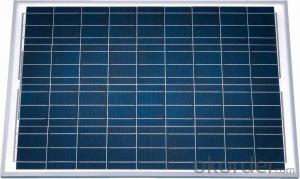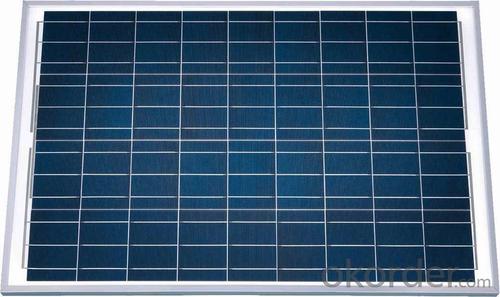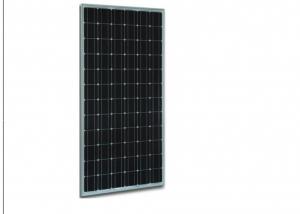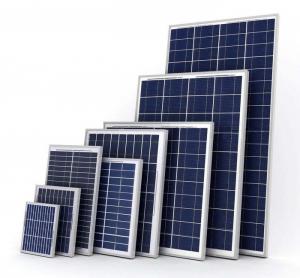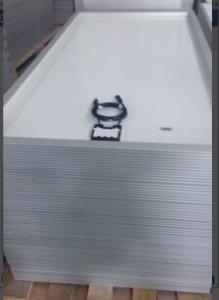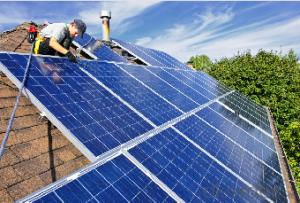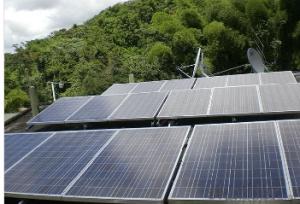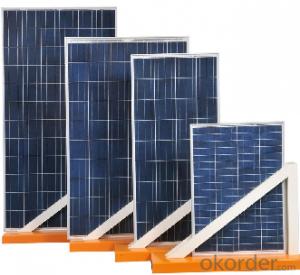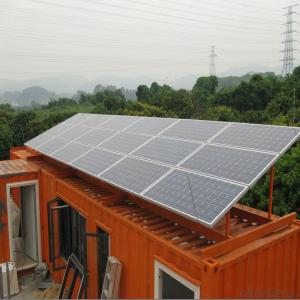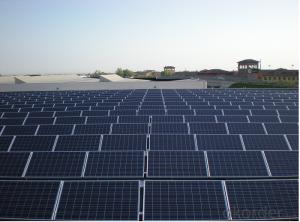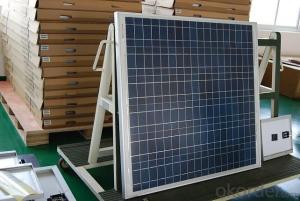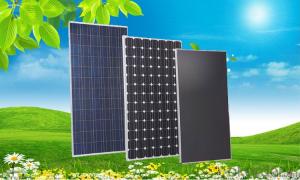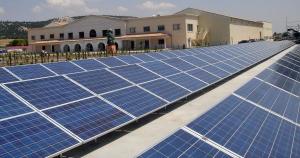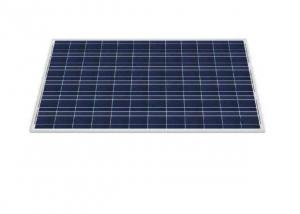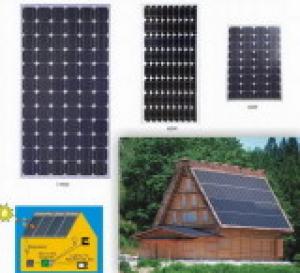Solar Panels Suppliers Near Me - CNBM Solar Monocrystalline 156 Series 300W
- Loading Port:
- Shanghai
- Payment Terms:
- TT OR LC
- Min Order Qty:
- 1000 watt
- Supply Capability:
- 20000000 watt/month
OKorder Service Pledge
OKorder Financial Service
You Might Also Like
Specification
Materials
Silicon
Guarantee
12 yrs free from defects in materials and workmanship
No less than 90% within 10yrs and no less than 80% within 25yrs
TUV(IEC61215&IEC61730), CE, UL
Application
Photovoltaic/ solar/ green energy/ energy saving
Descriptions
1.High efficiency crystalline silicon solar cell. Even if under the weak light, the solar module can produce maximum power output.
2.Tempered glass (toughened glass): Anti-reflecting coating and high transmission rate glass increase the power output and mechanical strength of solar module.
3. EVA and TPT: Using high quality EVA and TPT to prevent destroying and water.
4. AI frame: Without screw, rner connection. 6 holes on the frame can be installed easily.
5. Junction box: Multi function junction box with water proof.
6. Long lifetime: ≥25 years; Less power decrease.
7. Good performance of preventing from atrocious weather such as wind and hails.
8. Resisting moisture and etching effectively, not effected by geology.
9. The certificate issued by international authority: UL, TUV, IEC, CE.
Packaging Details
26pcs/pallet, 28pallets/ 40HQ
Our solar panels are packed in cartons, and then pallet.
Shipping by sea or by air are both ok, it up to customer’s chose.
We’d like to inquiry the freight cost for customer after be informed exact quantity and destination address.
CNBM International Corporation is a professional solar panel manufacturer in China for CNBM brand . Silicon panel ( silicon module), as our main product, has high quality and good service. Our products are very popular in Europe, Australia, England, Middle East, Mexico, Argentina, Chili, Singapore and Africa.Furthermore, our products have gained international authorized certificates like TUV, UL and CE.
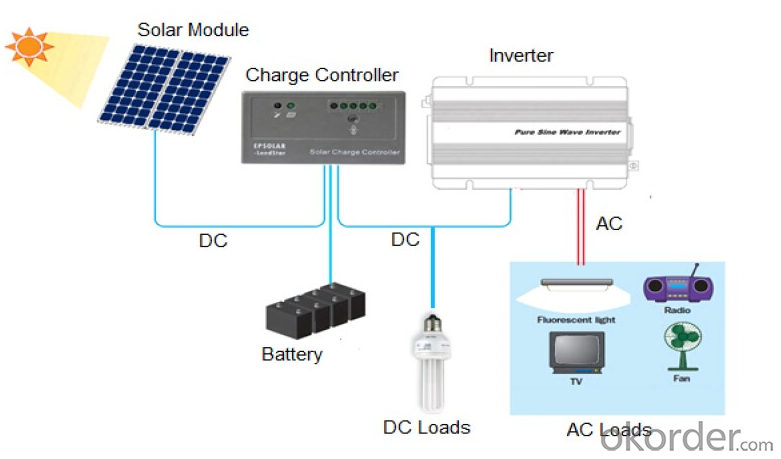
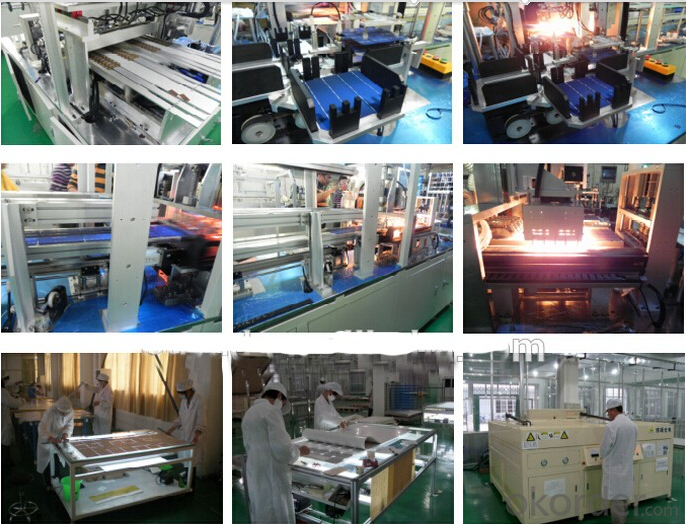

Why Choose Us
A. Professional Manufacturers , Strict quality control & power classification Silicon Solar PV Module
B. 100% A grade solar cell with Positive tolerance power range.
C. High Conversion Efficiency , High transmission rate , low iron tempered Anti-reflecting/coating film 3.2mm glass
D. Anti-aging & high visosity EVA
E. high frame resistant & Double-sided fluorine TPT
F. Anodized aluminum alloy high thickness frame
G. 3 or 6 bypass diodes , 90mm 4m2 cable , MC4 connectors & waterproof junction box
H. Long life, Easy installation, high wind & hail impact resistance
I. Be resistant to atmospheric exposure & effects of delamination
J. ISO9001:2008/ISO14001:2004/OHSAS18001:2007/ CE /TUV/CEC/ IEC/EN61215 IEC/EN61730/CHUBB INSURANCE
K. 10Years Manufacturing Quality Warranty , 10Years 90% Power output Warranty, 25Years 80% Power output Warranty
- Q: I'm thinking of having solar panels to generate electricity. The drawbacks are that I'm afraid if it needs repair, I won't be able to find anyone. Also I'm afraid that the roof is not very accessible. If it is a new house, should the roof have a roof hatch? What can make the system not work?
- Modern solar electric panels rarely fail. Because of this, if you would be installing them over a roof that only has a few years left on it, it would be better to redo the roof, first. In the unlikely event that a panel needs to be changed, this can be done in 30 minutes or so, because the panels are mounted on racks, with everything simply plugging together. I have never personally seen a solar installation go bad, but from what I hear, the inverter (a box that goes in next to your electric service panel) is usually what burns out after 5 years, assuming the install was done right in the first place. If you were to call roofers to repair your roof, they would somehow be able to get to your roof, by ladders, or a special truck. Solar installers use the same kind of equipment. They won't have a problem getting up there. A solar electric system is actually a very straightforward thing. No matter who installs it, if there is a problem, another installer should be able to diagnose and fix it.
- Q: Where can I find good instructions to build a cheap solar panel on my own?
- To build an effective but cheap solar panel, you need some expert advice. I recommend you get your hands on the comprehensive e-book and video instructions by Michael Harvey. His guide is very easy to follow and it will help you make a complete solar power system for less than $200. He also teaches how to make windmills. I hope this helps!
- Q: Can solar panels be used to power air conditioning units?
- Yes, solar panels can be used to power air conditioning units. Solar panels generate electricity from sunlight, which can be used to power various appliances, including air conditioning units. This is an eco-friendly and cost-effective way to cool buildings and reduce reliance on traditional energy sources.
- Q: Can solar panels be used for charging electric bicycles?
- Yes, solar panels can be used for charging electric bicycles. By connecting the solar panels to a charge controller and then to the electric bicycle's battery, the energy from the sun can be converted into electrical energy to charge the bike's battery. This allows for a sustainable and renewable way of charging electric bicycles.
- Q: I know absolutely nothing about electronics but have a lot of money. I am thinking of buying the Sunforce 3730 30W monocrystalline solar panel (the best I could find that was that size or smaller). What would be a good battery to go with it? I am thinking of buying a 2V Concorde Sun Xtender (again, the best I could find). But how many batteries will I need? I want enough batteries that it would take the solar panel 2 days to completely charge them from empty (bearing in mind the unavoidable inefficiencies like cloudiness/changing sun angles). Also, what other stuff would I need, like I hear something about a quot;charge controllerquot;? Any suggestions would be appreciated.
- If you are at a location/time where the panel will put out less power, you can adjust the battery size accordingly. And running a battery to empty is very bad for it's service life, so it's better to go a bit bigger.
- Q: Can solar panels be installed on art installations or sculptures?
- Yes, solar panels can be installed on art installations or sculptures. In fact, incorporating solar panels into art installations or sculptures is becoming increasingly popular as it allows for the generation of clean and renewable energy while adding an aesthetic and functional element to the artwork.
- Q: I am looking to wire in some solar panels into my home. I already have plenty of wiring, and some solar panels around. I just need to know what I need to do to wire them into my home so I can lower my electric bill. This past month it was six hundred dollars.Can someone direct me to some information, or tell me how without telling me to hire some guy to come out to charge me thirty thousand dollars to install two or three thousand dollars worth of equipment?
- I okorder Hope this helps.
- Q: What is the lifespan of solar panel batteries?
- The lifespan of solar panel batteries can vary depending on various factors such as their quality, usage patterns, and maintenance. On average, well-maintained solar panel batteries can last anywhere between 5 to 15 years. However, advancements in technology and improvements in battery design are constantly being made, which could potentially extend their lifespan in the future.
- Q: Can solar panels be installed on boats or RVs?
- Yes, solar panels can be installed on boats or RVs. In fact, it is quite common to see solar panels being used as a source of renewable energy in these mobile settings. Solar panels can provide a reliable and sustainable power solution for charging batteries and running various electrical appliances on boats and RVs.
- Q: how the energy of load connected to solar PV measure.?Want too the basic idea about it.The role of current flowing thrugh the load?Can u explain with example..can explain simply?Im not an electrical student so explain very basics
- A solar panel is made up of solar cells. Each cell produces about 0.5 to 0.6 volts. Cells are connected in series, like the batteries in a flashlight. Enough cells are placed in series to produce the desired voltage. Cells produce very little current, so many strings of cells are connected in parallel to produce sufficient current. The output is direct current (DC), like that from a battery. A home solar system needs alternating current (AC), so an inverter is used to change from DC to AC. Some systems have batteries for backup power. In these some of the DC output is used to keep the batteries charged. Systems are measured in kilowatts. System sizes are chosen to meet the demands for electricity. My system has a 6 kilowatt (kW) rating. The true output is more like 4. Now that you know this much you can Google SOLAR SYSTEMS to learn more.
Send your message to us
Solar Panels Suppliers Near Me - CNBM Solar Monocrystalline 156 Series 300W
- Loading Port:
- Shanghai
- Payment Terms:
- TT OR LC
- Min Order Qty:
- 1000 watt
- Supply Capability:
- 20000000 watt/month
OKorder Service Pledge
OKorder Financial Service
Similar products
Hot products
Hot Searches
